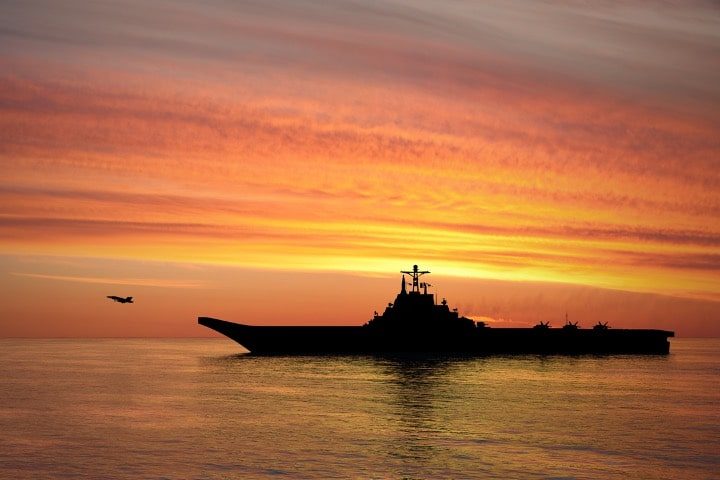
After President Joe Biden signed the 2023 National Defense Authorization Act (NDAA) into law last Friday, China responded with “joint firepower strike drills” near Taiwan on Sunday, adding to the ongoing escalation of tensions by the superpowers in the Indo-Pacific region.
Beijing’s military blamed the United States for the latest drills, saying Washington’s “escalation of collusion and provocation” with Taiwan has forced them to make a “resolute response.” China’s military exercises were a direct result of the passage of the NDAA, which included billions for the security of Taiwan.
Senate Foreign Relations Committee Chairman Bob Menendez (D-N.J.) shared this month in a statement key pillars of his legislation to strengthen the U.S.-Taiwan relationship. “The updated bill in the NDAA will dramatically enhance the United States’ defense partnership with Taiwan by establishing, for the first time ever, a specific defense modernization program for Taiwan. The TERA [Taiwan Enhanced Resilience Act] authorizes up to $10 billion in security assistance over the next five years to modernize Taiwan’s security capabilities to deter and, if necessary, defeat aggression by the People’s Republic of China,” he said.
The Department of Defense (DOD) has for years claimed that China is the greatest long-term threat to the U.S. way of life. China also poses the greatest challenge to the DOD as our government attempts to stay a step ahead of Beijing’s rapid growth of their military resources.
However, even with the new NDAA adding more funding for increased security and firepower in the Indo-Pacific area, some lawmakers and allies are skeptical that it won’t be enough to deter China from increasing their military influence in the region.
Politico published a comprehensive article on Tuesday that paints a complex picture of the United States’ role regarding threats, mostly from China, in the Indo-Pacific, reporting:
Beijing now wields a navy large enough — backed by air power and “carrier killer” ballistic missiles — to challenge longtime U.S. naval dominance in the Indo-Pacific. And deliveries to Taiwan of billions of dollars in U.S. arms are backlogged, due to supply chain issues related to the pandemic and exacerbated by the Ukraine conflict.
To combat China’s growing threat to the region, the U.S. will need a larger naval force for some time to come. And that’s a concern, as the U.S. is not prepared to quickly respond to any crisis and Beijing maintains a growing naval-power advantage. “That’s fueling fears that Beijing could exploit its growing naval power advantage to launch an invasion of Taiwan before the U.S. military can catch up, sparking a devastating regional conflict that would force the United States to either intervene or abandon its promise to protect the self-governing island.”
Speaking at a conference early this month, Ely Ratner, assistant secretary of defense for Indo-Pacific security affairs, said that “2023 is likely to stand as the most transformative year in US force posture in the region in a generation.”
According to Politico,
The Pentagon has spent billions since 2021 on Asia-focused initiatives, including base maintenance and relocating some U.S. forces within the region, to maintain a “competitive advantage” over China’s military. And the U.S. military presence in the region will become “more lethal, more mobile and more resilient” in the coming 12 months, Ratner said, hinting that new partnerships are in the works. He said details on what that will mean in practice will come in early 2023.
But Ratner’s comments are just feel-good rhetoric, as the U.S. is behind in reaching the “competitive advantage” projected goal. That’s because “the Pentagon is planning to temporarily cut its number of naval ships and is reducing its aircraft in the region as it prepares to replace them with more modern versions. And U.S. shipbuilding constraints could make it difficult to deliver on a plan to help Australia build nuclear submarines — part of a joint strategy to deter China.”
Another issue is that, although the NDAA that Biden signed on Friday includes a provision that allows up to $10 billion in U.S. grants for security assistance to Taiwan over the next five years, the bill stipulates that the assistance must come in the form of loans, not grants, at least for this fiscal year.
Beijing claims that there is nothing threatening about its military buildup. “China develops necessary military capabilities to defend its legitimate national security interests, which is entirely legitimate and reasonable,” Chinese Foreign Ministry spokesperson Wang Wenbin said in September. Currently China has a 340-warship navy, which is considered the world’s largest; the U.S. Navy has 292 vessels.
Japan has increased their defense spending recently, including the purchase of long-range Tomahawk cruise missiles, and South Korea’s new Indo-Pacific Strategy “commits Seoul to expanding regional security cooperation in an effort to defend against threats to democracy and protect Indo-Pacific sea lanes.” Both of these allies know that the U.S. can’t stand alone in keeping Beijing in check.
Other Indo-Pacific countries are fearful of China’s growing military influence. The Philippines has had to fend off ongoing incursions by Chinese vessels into its waters and is considering allowing the U.S. Navy to return to its former base at Subic Bay more than three decades after U.S. forces pulled out. According to Politico:
“To have a seamless reinforcing defense relationship … the infrastructure must be in place like naval bases, air bases, depots, radars. We don’t have these things in the Philippines,” said Delfin Lorenzana, former Philippine defense secretary. That means the U.S. “cannot sustain a long supply chain from Guam and Japan/Korea to project its power in the South China Sea.”
As Ratner stressed in his speech, deterring China from invading Taiwan is a long-term priority for the Pentagon: “It’s a today problem. It’s a tomorrow problem. It’s a 2027 problem. It’s a 2035 problem. It’s a 2040 problem.”




